Imagine this:
You’ve got a lot of food and perishables stored in your Frigidaire refrigerator… But, for some reason, it’s not cooling!
Then…
In a bid to get it running again, you try cleaning out your fridge. Unplugging and plugging it back. Or even try moving it to another power outlet.
Still, no dice.
So, you’re left wondering – What gives?
Well:
Frigidaire has a good reputation for making high-quality and reliable refrigerator models. But, let’s face it – no brand has a perfect quality and reliability score.
On occasion, products do fail.
And when that happens, the main question is usually – why and what can be done to fix the issue?
Luckily:
While there are many reasons why Frigidaire refrigerators stop cooling, there are quick and easy fixes to each problem.
And that’s why you are here.
Read on to learn more about why your fridge isn’t cooling and what you can do to fix it.
Table of Contents
Several Reasons Why Your Frigidaire Refrigerator Isn’t Cooling
Why isn’t your Frigidaire refrigerator cooling? It could be because of a clogged air filter, a thermostat that isn’t working, or a faulty start relay. Sometimes, the issue can emanate from worn-out seals, item overloading, a dead compressor, or dirty condenser coils. Luckily, some of these issues can be rectified through cleaning or replacing parts.
1. The Air Filter Is Clogged
Get this:
Your fridge requires a regular stream of cool air to keep things cold. But the air filter can develop clogs after a while. Luckily, replacing an old air filter is easy.
So, how do you fix this?
Step 1 – Remove the Old Air Filter
For most models, the air filter should be under the bin in the door panel. So, open the door panel and then remove the filter. But be careful when handling it. You wouldn’t want all the debris on your filter to create a mess.
Step 2 – Discard the Old Filter
Frigidaire fridge filters are not reusable. Be sure to get rid of the old ones when necessary. Note, if your current filter is around 6 months old, it should be replaced with a new one.
Step 3 – Insert the new filter into your fridge
Be carefulwhen installing your new air filter.Try not to force it in because doing so may bend it, consequently, rendering it less effective.
2. The Power Circuit Is Broken
First:
You can tell the power circuit is broken if the condenser fan and compressor aren’t working.
Basically, this is when your fridge has power and the evaporator fan is running, yet, the other two parts aren’t doing anything.
If that’s the case:
Step 1 – Remove the machine compartment cover and check the fan and compressor. The fan and compressor both link to the same power circuit in your fridge.
Step 2 – If nothing is happening down there, unplug the fridge.
Step 3 – Then, remove the PTC relay from the refrigerator. You can tell the start relay is broken and needs replacing if it rattles when you shake it (check solution 3). If it’s not rattling, you’ll need to replace the power circuit.
How?
1. Open the compartment that covers the control box. You’ll need a screwdriver to open this part.
2. Unplug the connector on the control box. Then, use a power tester to see if the control panel is working. This is done by putting separate leads on the red and blue wires on the control panel. Do you see 5 ohms on the meter? That means you’ll need to replace the control panel or the wiring because it’s not getting enough voltage.
3. Look at the wires in the area. Are any of them broken or frayed? If any, you’ll need to replace those wires as necessary.
4. Review the harness that connects the board to the rest of the fridge. Here, use the same power tester to see that it’s also working. If there’s no power going through or there isn’t enough, consider replacing it.
3. The Start Relay Isn’t Working
Now:
When the condenser fan is working, but the compressor is dead silent, the problem could be the Start Relay.
To check and fix this issue:
Step 1 – Open the panel in the back part of your fridge.
You’ll find the start relay by looking at your compressor.
It’s the small box on the side of the compressor. Gently remove the start relay using a flathead screwdriver once you find it.
Be careful around any of the wires and other connections near the relay.
Step 2 – Clean off the relay if you notice debris building up on its body.
Note:
Sometimes the relay might stop working because it has dirt buildup that keeps it from working well. If that’s the case, clear off the buildup.
Step 3 – You can also replace the relay if necessary.
How can you tell the start relay isn’t working?
Remove the start relay from the fridge. Then shake it to see if rattles. If it does, then your relay is likely damaged. In other situations, you can use a power tester to see if the relay is working.
Simply, check for continuity using an ohmmeter. Discontinuity means that there’s something wrong.
It’s that simple.
But, be sure to get the right part. Check your refrigerator manual for the model number and details on what part is necessary.
4. The Compressor Is Dead
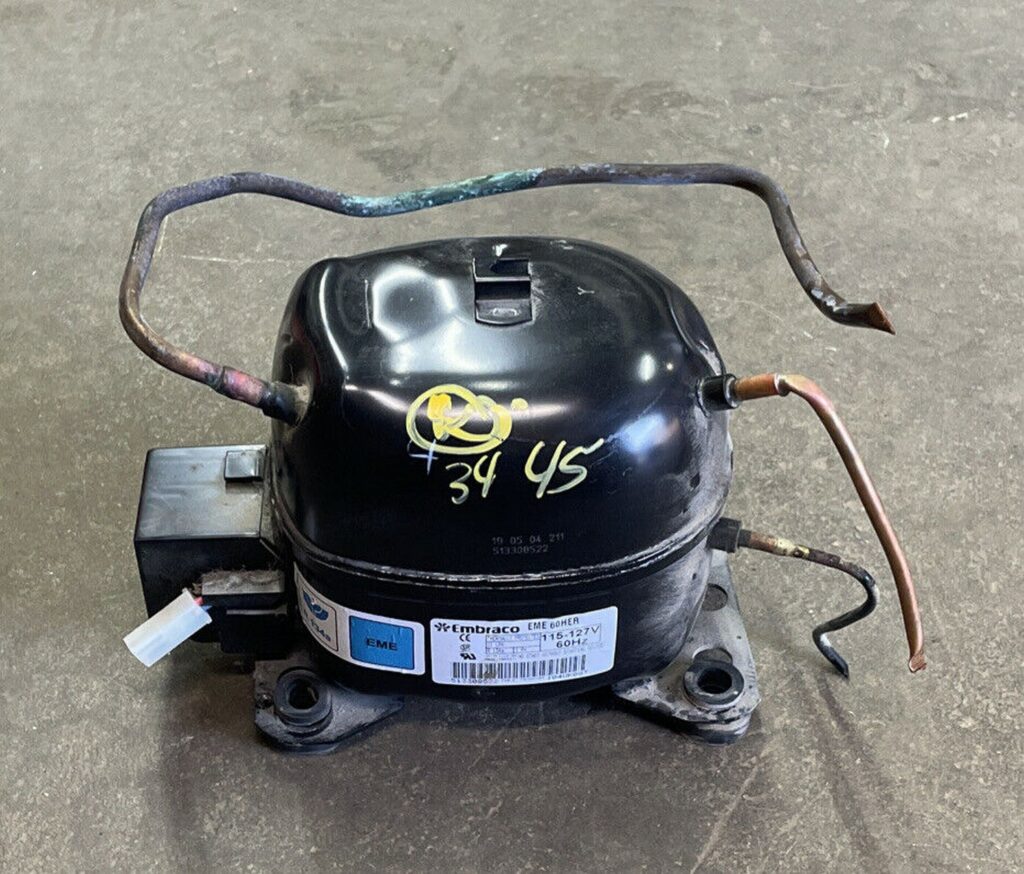
Here:
Step 1 – Test the compressor to see if it works.
With a working relay, the odds are that your compressor is dead. Use a power tester on the bottom connection for your compressor after you remove it from your fridge.
There should be continuity through the compressor. If there’s none, you’ll need to replace it.
Step 2 – Replacing the compressor (if it’s not working).
You will need to unscrew the compressor and add a new one as necessary. Remember to check which specific part you need to ensure it’s compatible.
5. The Thermostat Isn’t Working
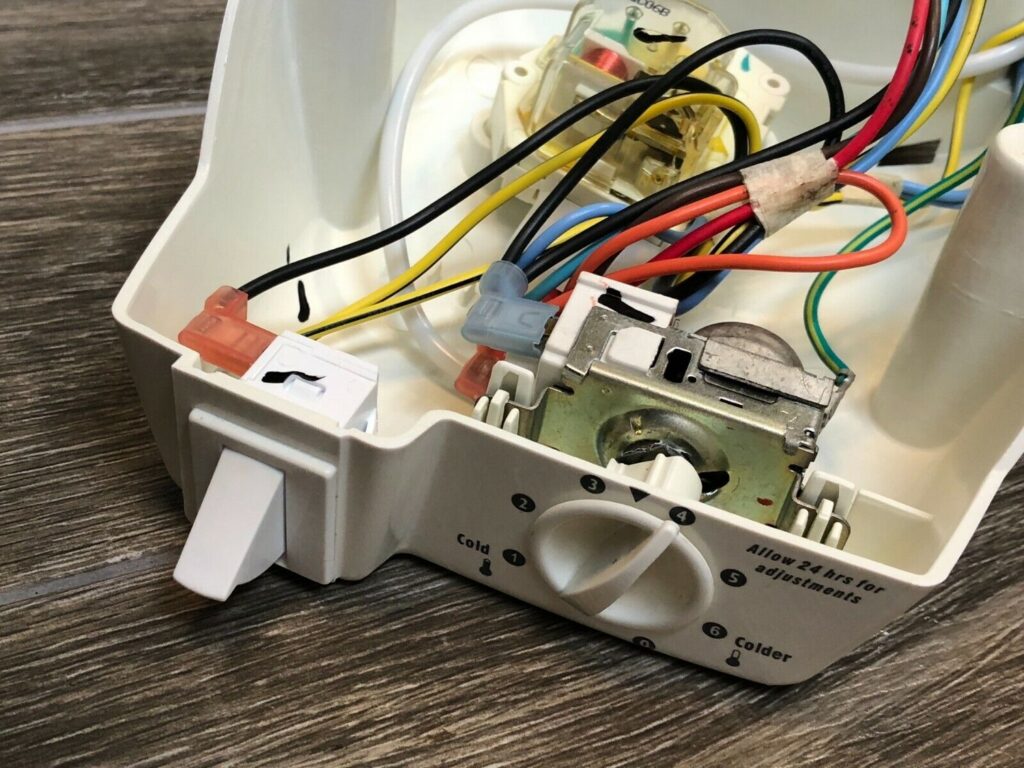
What does the thermostat do?
Well:
A thermostat regulates the temperature inside a fridge. It does so by sending signals to the compressor to turn it On or Off.
This design ensures the fridge only cools when necessary, thus, it doesn’t use more power than necessary.
Now:
What if the thermostat fails?
The fridge won’t be able to start up when necessary. To diagnose and fix this, follow these steps…
Step 1 – Check the thermostat knob in the back part of the fridge.
First, twist the know to ensure that the knob isn’t frozen in place. The thermostat knob helps you adjust the temperature. Therefore, if it is not turning, you won’t be able to adjust your cooler.
Step 2 – Test the thermostat.
Turn the thermostat to the lowest setting (OFF) and listen to what happens.
Is there a click?
That means the cooling system is turning off, meaning the thermostat is working. However, if there’s no click, you may need to test and replace your thermostat.
Here’s how:
Step 3 – Remove the thermostat.
Carefully, use a screwdriver to open the thermostat’s housing. Unplug the colored cable or connector linking the thermostat to the fridge.
Remove the cold control knob with a screwdriver.
Then, gently take out the wires from the cold control terminal. You can use a flathead screwdriver for this. Also, remove the green ground wire from the connection.
You should be able to remove the entire cold control terminal at this point.
Next:
Remove the Styrofoam block in the thermostat housing. But make sure it stays in one piece.
Step 4 – Test the Thermostat for Continuity Using a Multimeter.
Once that’s done:
If you determine the thermostat isn’t working, proceed to step 5.
Step 5 – Install your new thermostat unit into the opening.
Here:
You should remove the damaged thermostat and replace it with a new one. Then, follow steps 3, 2, and 1 in reverse.
But, remember:
Be sure to test the thermostat to see if it is working well and can adjust your fridge’s temperature as necessary.
Note that there’s no way to repair a broken thermostat, so, replacing it is your only option.
6. The Condenser Coils Are Dirty
The condenser coils are responsible for the removal of heat from your refrigerant.
However:
Having dirt and debris buildup on the coils can hinder heat dissipation. Thus, affecting and/or slowing the cooling process.
The fix?
Step 1 – Unplug the fridge before handling the coils.
For safety, it is always advisable to work on electrical appliances while they are unplugged. This mitigates the chances of getting electrocuted.
Step 2 – Unscrew the back cover at the bottom and clean the coils.
That is where the condenser coils are.
If you notice a lot of dirt and debris on your coils, use a brush (with semi-soft bristles) and a handheld vacuum to clean them off.
Once you are done…
Replace the back cover to protect the coils and then plug the refrigerator back in. Then, after an hour or so, check if your refrigerator is cooling as it should.
Pro Tip:
For the best results, clean your coils every six months.
7. Worn-Out Seals
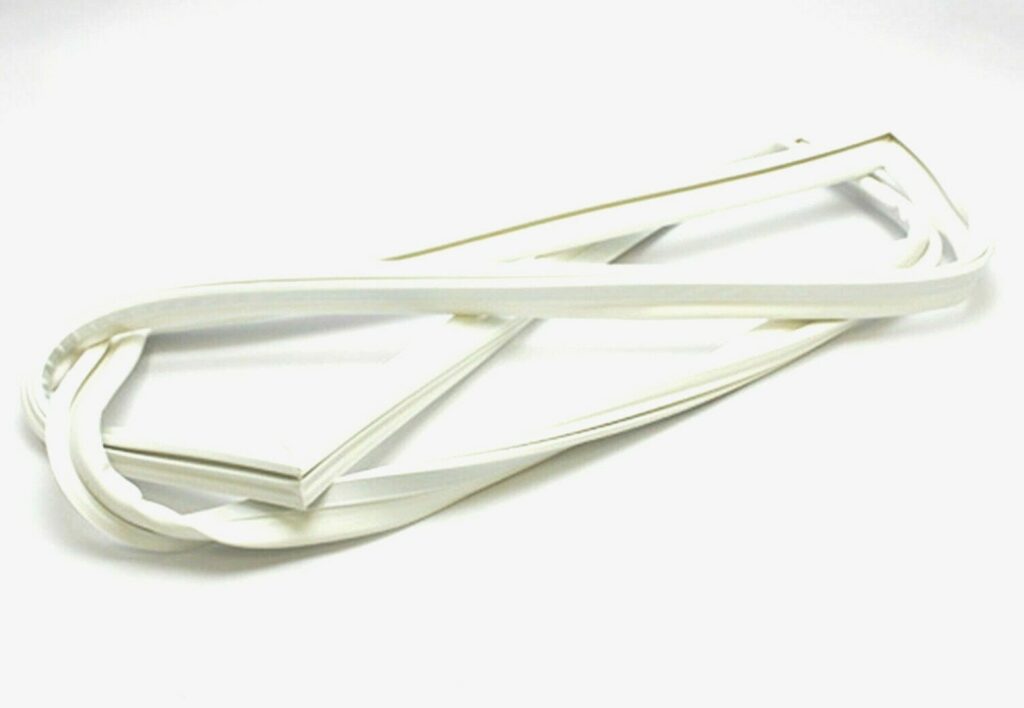
Now:
The seal around the fridge door can wear after a while, making it harder to keep your appliance airtight.
If this is the case with your fridge, here’s what you should do.
- Order a new seal or gasket that fits your fridge door. You have to check the model number of your fridge first to ensure the new seal you buy will fit your model.
- Remove the old seal. Don’t worry, it’s easy. Look for a groove on one of the corners of the seal then gently peel it off the door. Since the design differs from one fridge to the other, watch out for and remove any screws that might be securing the seals.
- Uncover the adhesive on your new seal and align it around the proper ends of your fridge. For seals that use screws, don’t forget to screw them back in.
8. You Are Storing Too Many Things In Your Fridge

Yes!
One common reason a fridge stops cooling is that it has too many things in it.
An overloaded fridge limits air circulation and can block air vents. Hence, making it harder for uniform cooling to take place.
The fix?
- First, remove everything from your fridge. You can use this time to review the insides to see if any other issues require your attention.
- Next, check and note where the air vents inside your fridge are. Typically, you’ll find them around the corners or on the back end of the fridge. The specific locations will vary by model.
- Now, place items back in your fridge. But ensure you keep it between 70% and 85% full. When arranging your items, ensure there’s enough room in between each.
What Models Are Impacted the Most?
Frigidaire Refrigerator Side By Side
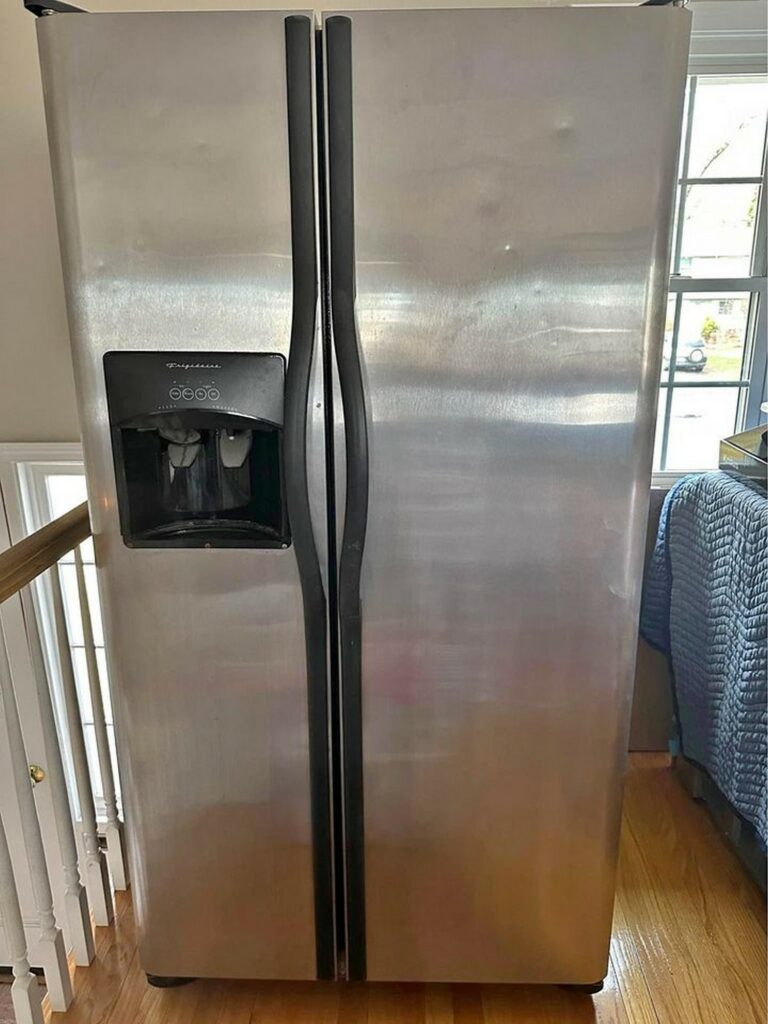
So:
The Side By Side refrigerator is a popular Frigidaire model. It offers ample space with different compartments for refrigeration and freezing. But it is prone to having dirt on the condenser coils.
Frigidaire Gallery Refrigerator
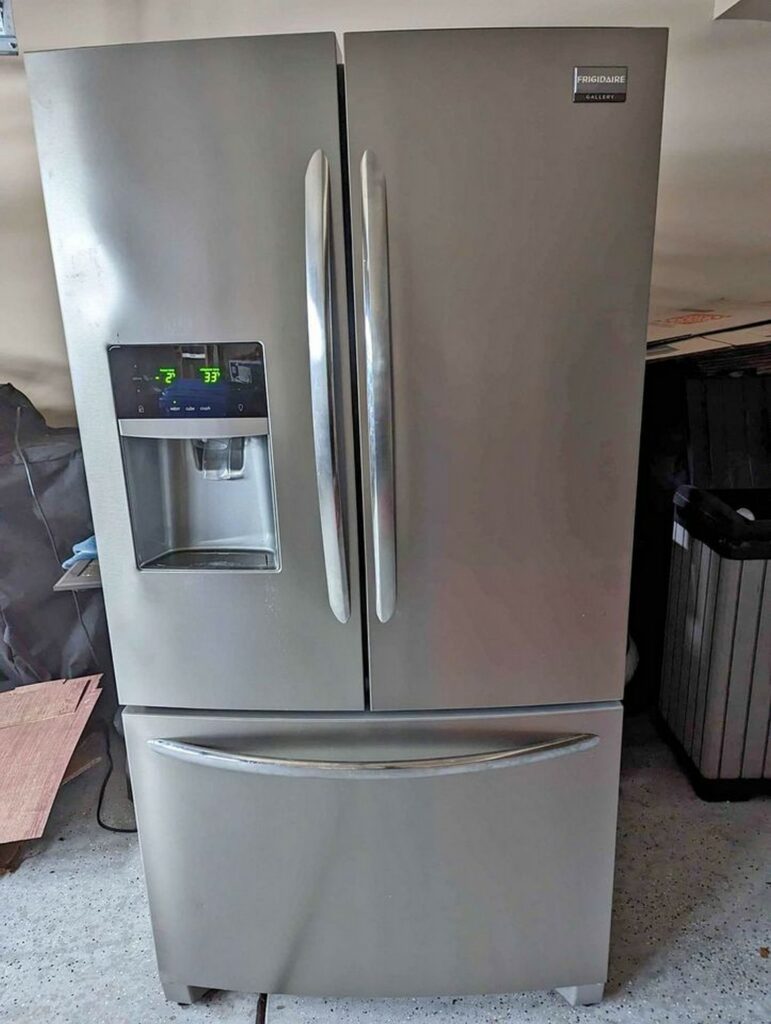
Now:
The Gallery’s ice bin in the top left corner of the freezer compartment is an added convenience.
But:
The filter inside the fridge frequently clogs, keeping cold air from moving through. Consequently, making it harder for the ice maker to stay functional.
Frigidaire French Door Refrigerator
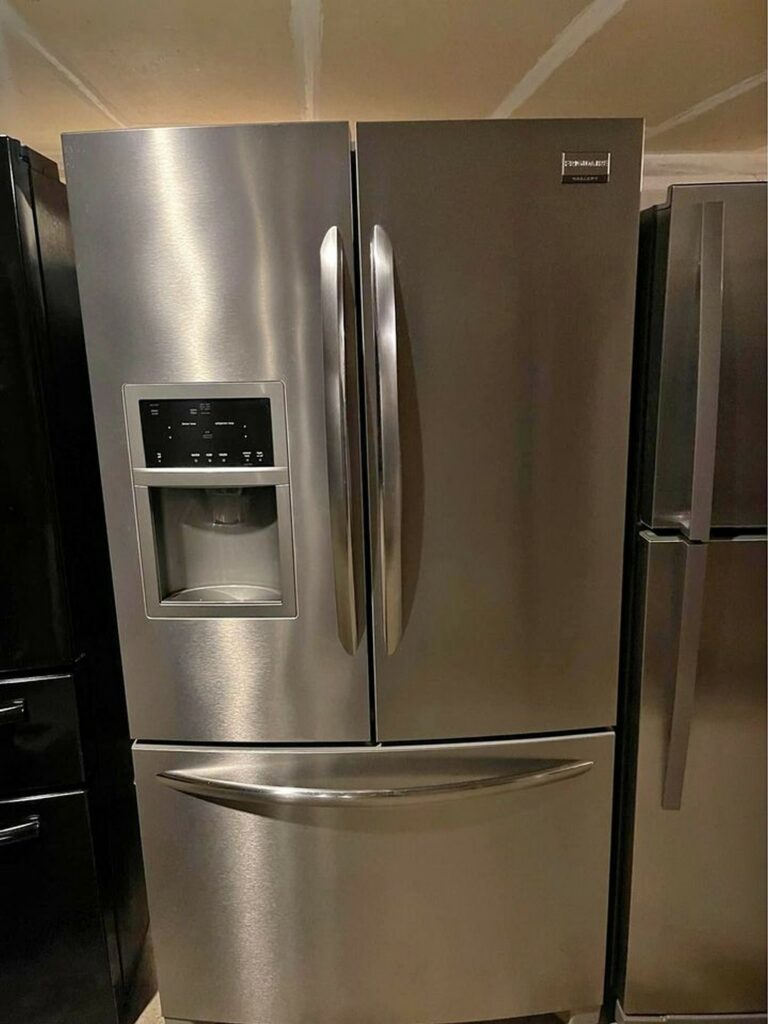
The two fridge doors and freezer compartment on the bottom part make the Frigidaire French Door Refrigerator a unique and appealing choice.
However, air filter and condenser coil failures are quite common with these.
Frigidaire Refrigerator FRS23
Now:
The FRS23 includes multiple, convenient controls. The water dispenser is also a plus.
However, the seals tend to weaken easily, inevitably, affecting the normal functioning of the freezer. Sometimes, the fridge may become colder than necessary.
Frigidaire Compact Refrigerator
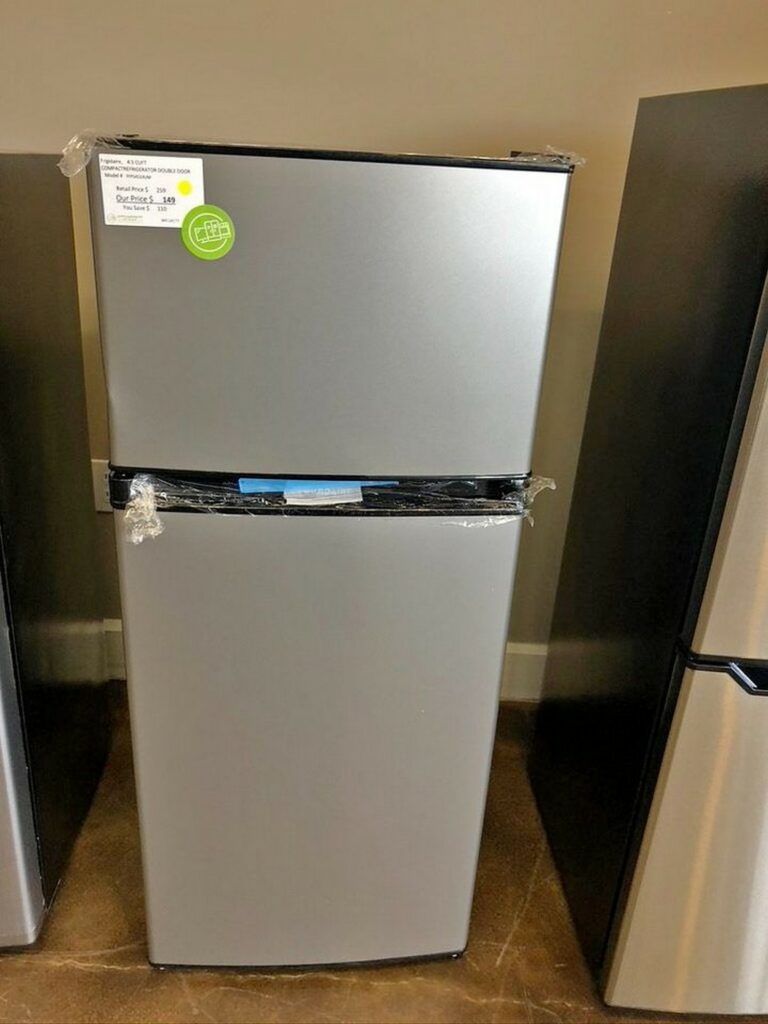
Finally:
For smaller spaces, the Frigidaire Compact Refrigerator is the way to go. This brand makes mini models with three to four cubic feet of space, which is ideal for compact spaces.
Still:
The compressor in this model is often weak and might stop working prematurely.
Conclusion
So:
Now you know the many ways a Frigidaire refrigerator can stop working. But on the plus side, the solutions above will help keep your fridge working seamlessly.
To recap, you can…
- Replace the air filter if you haven’t done so in a while (every 6 months).
- Troubleshoot your compressor or try resetting it.
- Check the compressor’s start relay.
- Check the thermostat to see if it works.
- Clean the condenser coils (every 3 months).
- Replace worn-out seals.
- Reorganize your fridge to keep items from obstructing the air vents.
In general:
Your Frigidaire fridge should work as intended if managed well. And with the problems and fixes above, it becomes easier to do this.
Anyway:
If any of the solutions above do not work, don’t hesitate to seek professional services. Also, don’t hesitate to share your thoughts with us in the comments section below.
Frequently Asked Questions
Many things can keep your fridge from working well, including compressor failure, thermostat malfunctions, a clogged filter, dirty condenser coils, worn-out seals, or an overloaded fridge.
Frigidaire refrigerators don’t have reset buttons. However, you can unplug the fridge and then plug it in after about five to ten minutes. You can also turn off the fridge and freezer setups on the inside of your refrigerator after unplugging it.
Then turn them back on after plugging the fridge back in.
There are no reset buttons on Frigidaire refrigerators.
There are many possible reasons including cooling system (condenser, thermostat, cooling fan, cooling coils, and air filters) failure, worn-out seals, or overloading.

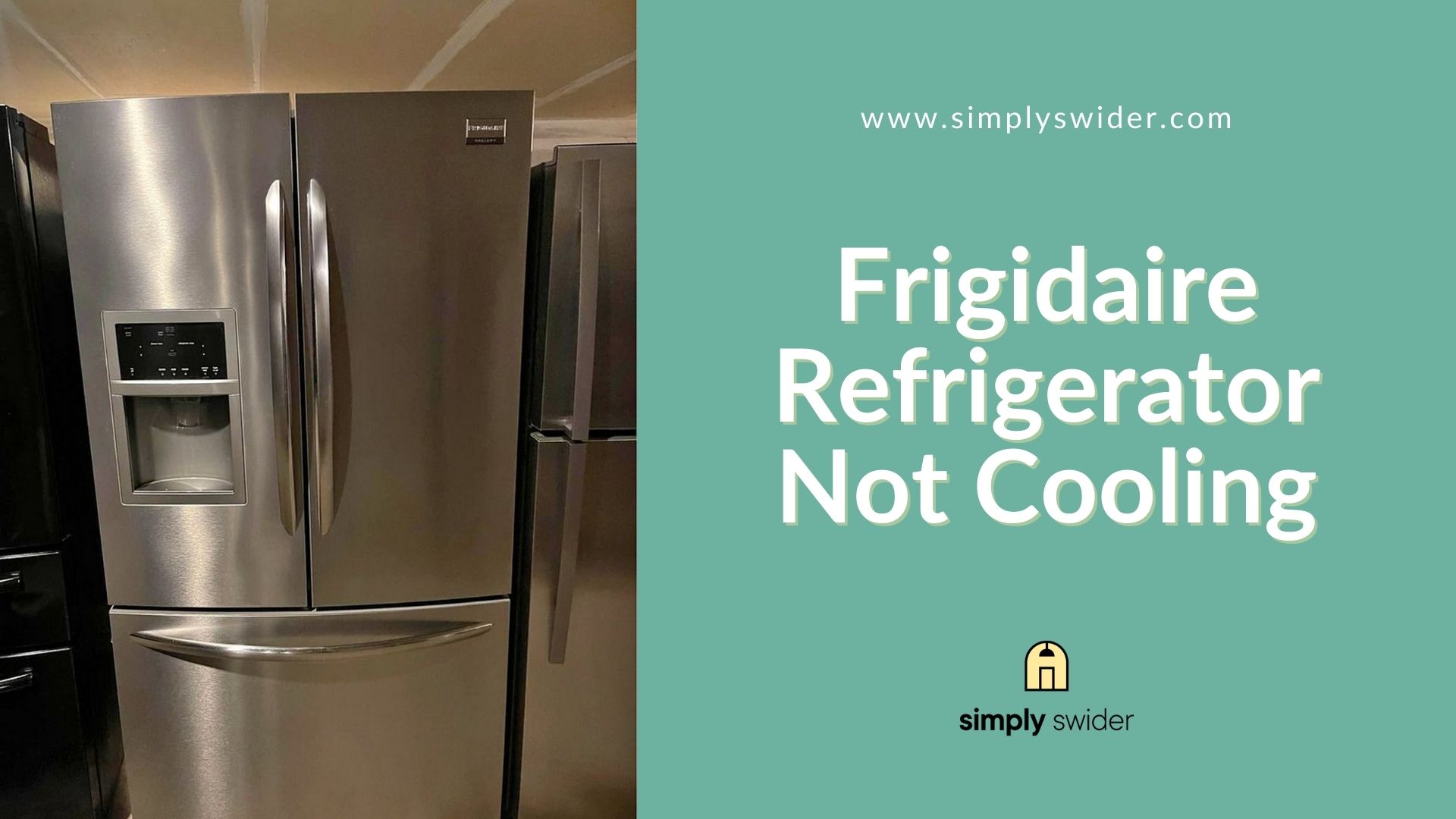
I have model frsg1915av, my freezer is in fact doing its job, for the most part but the refrigerator side isn’t getting cold enough to keep items cold enough to last, any help would be greatly appreciated.
Hi Marcus,
Check the following:
Check: Listen for the fan when you open the fridge. If silent, it might need replacement.
Check: Ensure the damper opens and closes as it should.
Check: Clean the coils with a brush or vacuum.
Check: Rearrange items if vents are obstructed.
Jason.